Tech
These fashion brands cut production costs with AI models
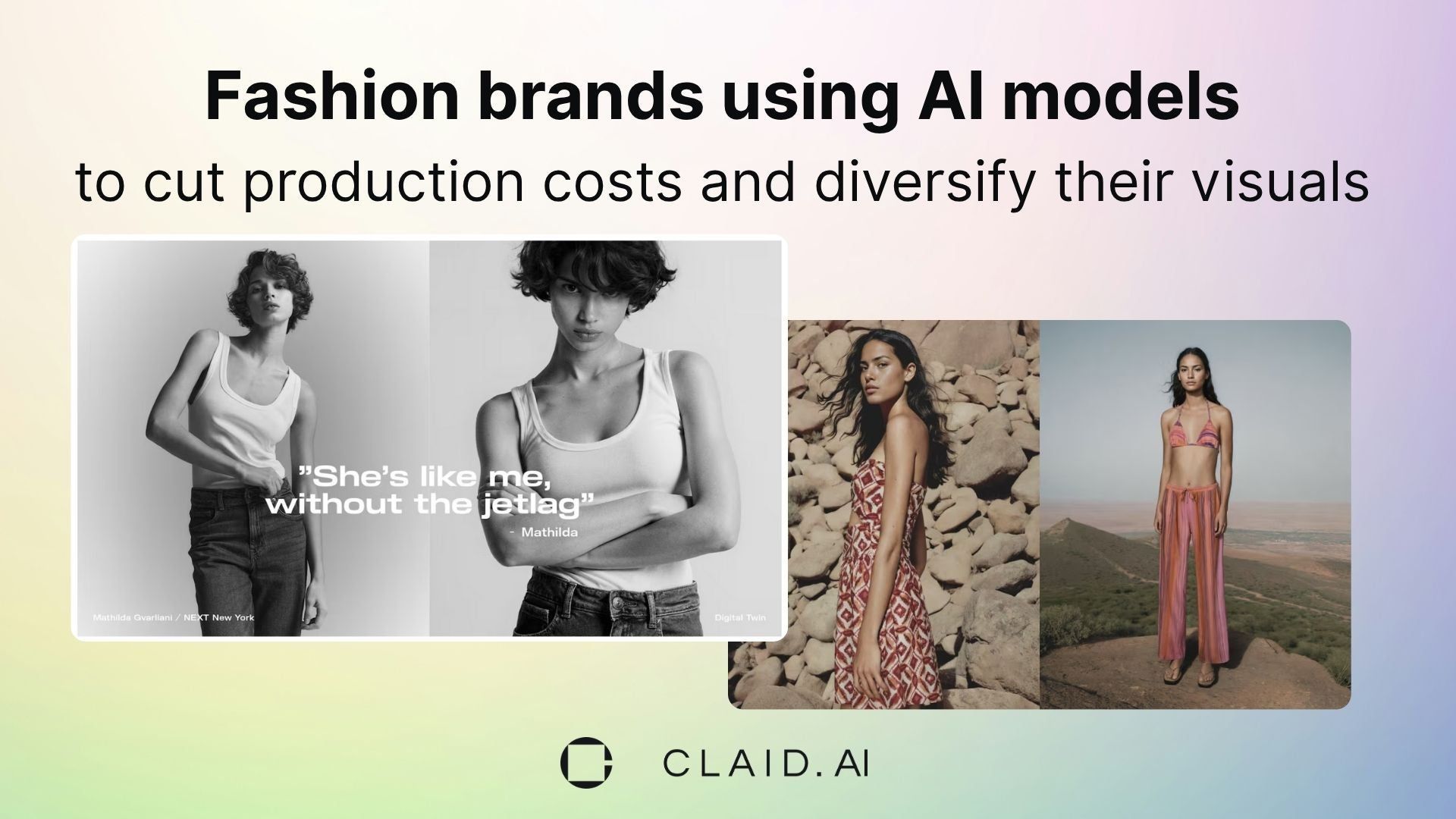
Fashion brands are under pressure to launch more and faster, which means regularly producing hundreds of images to cover all variants, show the garment in different sizes, and present clothing across marketplaces and social media.
Sounds expensive, and somewhat exhausting. Doing all of that with traditional photoshoots truly is. But you can replace weeks of hiring people, managing logistics, and retouching with instantly generated on-brand visuals: thanks to AI fashion models.
A lot of companies are already doing so, and are impressed with how much time they can save and how much room for creativity they have.
* Traditional creative shoots still matter for setting aesthetic benchmarks and conveying brand image. But AI models handle the routine work: catalog shots, size variants, marketplace listings, or quick social posts.
Let’s explore the most famous cases of AI model campaigns, the benefits this tech brings to clothing companies, and industry challenges you’ll need to navigate through if you want to try generating fashion photos with AI tools.
Brands using AI fashion models: most notable cases throughout the years
We’ll dive into how AI models evolved, how the public reacted to their appearance in fashion ads, and how brands and marketplaces benefit from adopting them.
First steps: CGI models (2017-2019)
First more or less convincing AI images of models started appearing around 2017, establishing a new category of CGI models / AI influencers. Shudu Gram, who claims to be the first digital supermodel, has been appearing in various clothing ads for almost a decade.
Luxury brand Balmain was among the first to test the waters. While it faced some criticism from real-life models scared to compete with CGI girls, the situation also spurred a lot of new developments, with fashion companies eyeing gen-AI technologies.
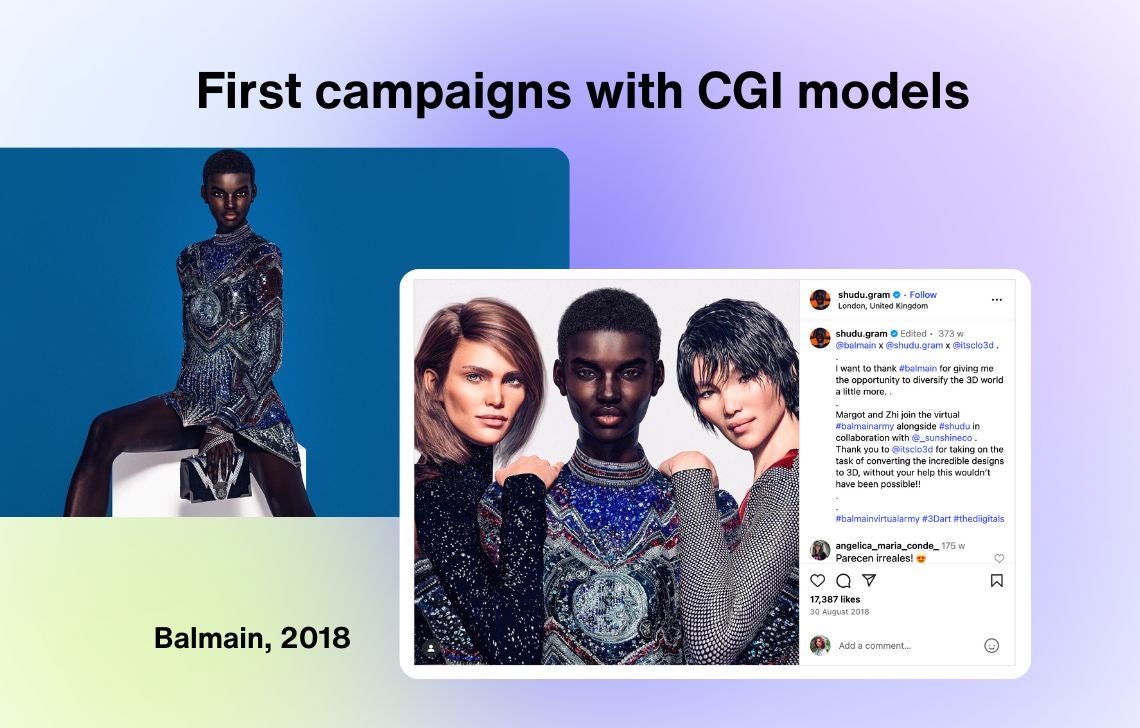
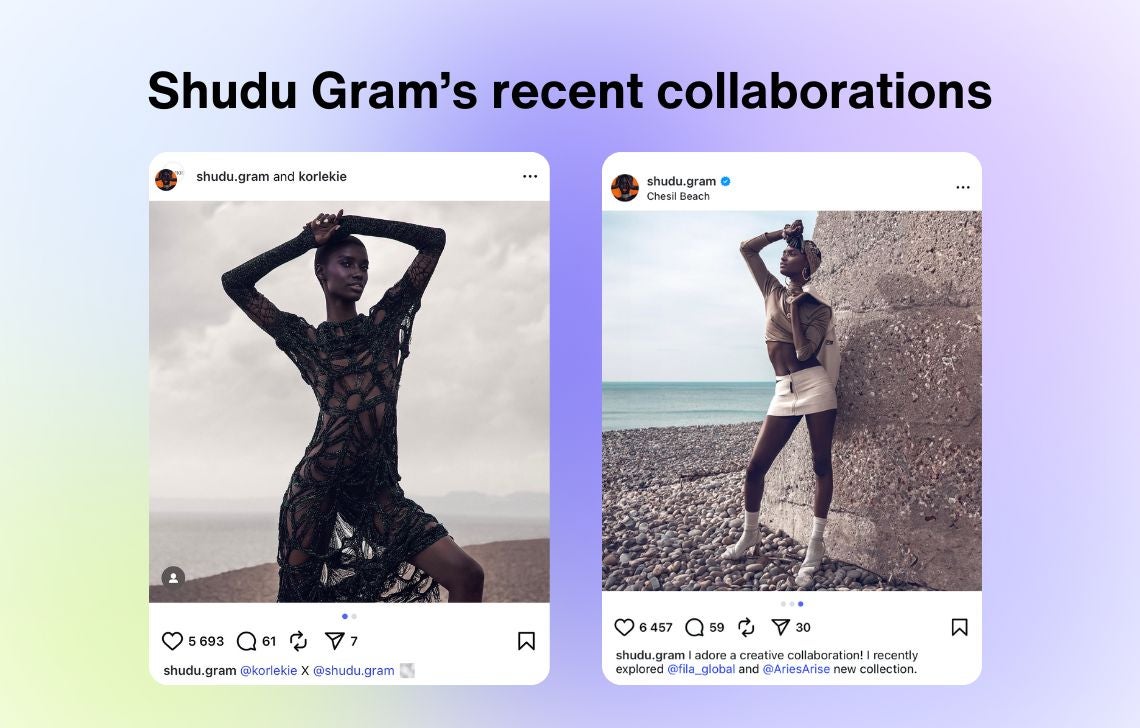
Another prominent figure in the AI influencing space is Miquela Sousa. Featured on numerous campaigns for brands like Givenchy, Prada, and Calvin Klein, she’s continuing to style looks with real clothing.
For instance, a Calvin Klein campaign with Miquela Sousa alongside real-life supermodel Bella Hadid went viral in 2019.
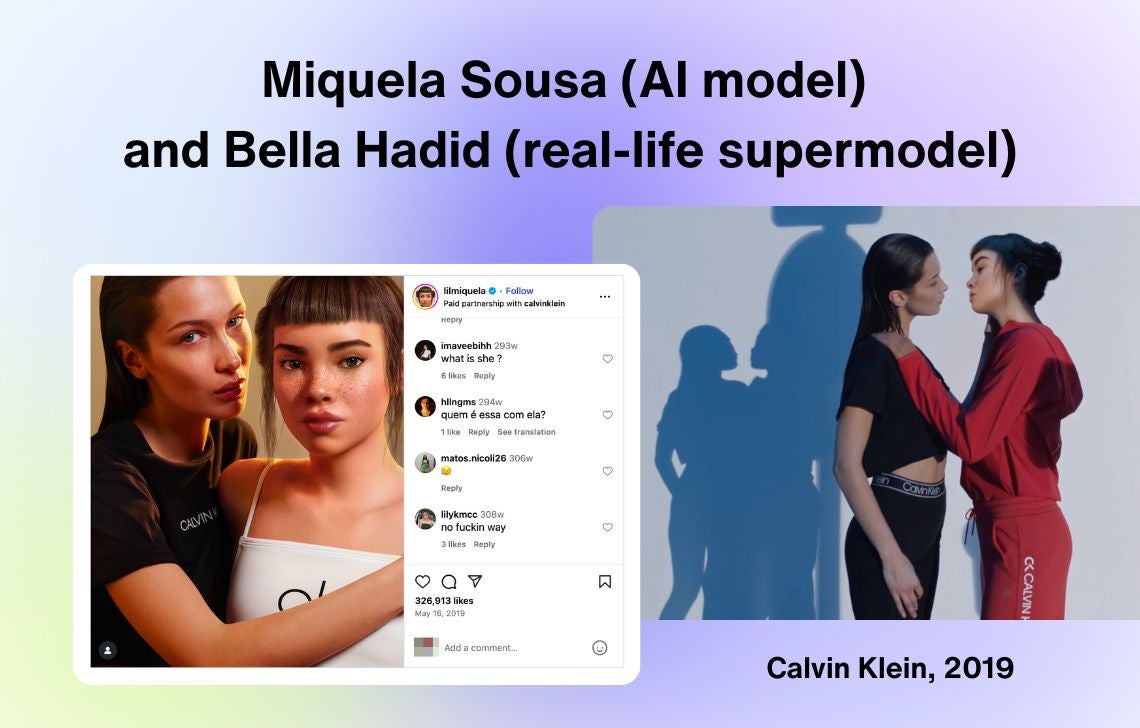
While Shudu Gram looks somewhat too polished and plasticky (and is also more involved in projects centered around digital design), Miquela Sousa is committed to transmitting a lifelike image. She’s often “seen” at industry events, hanging out with real people, and tagging real brands she’s “wearing.”
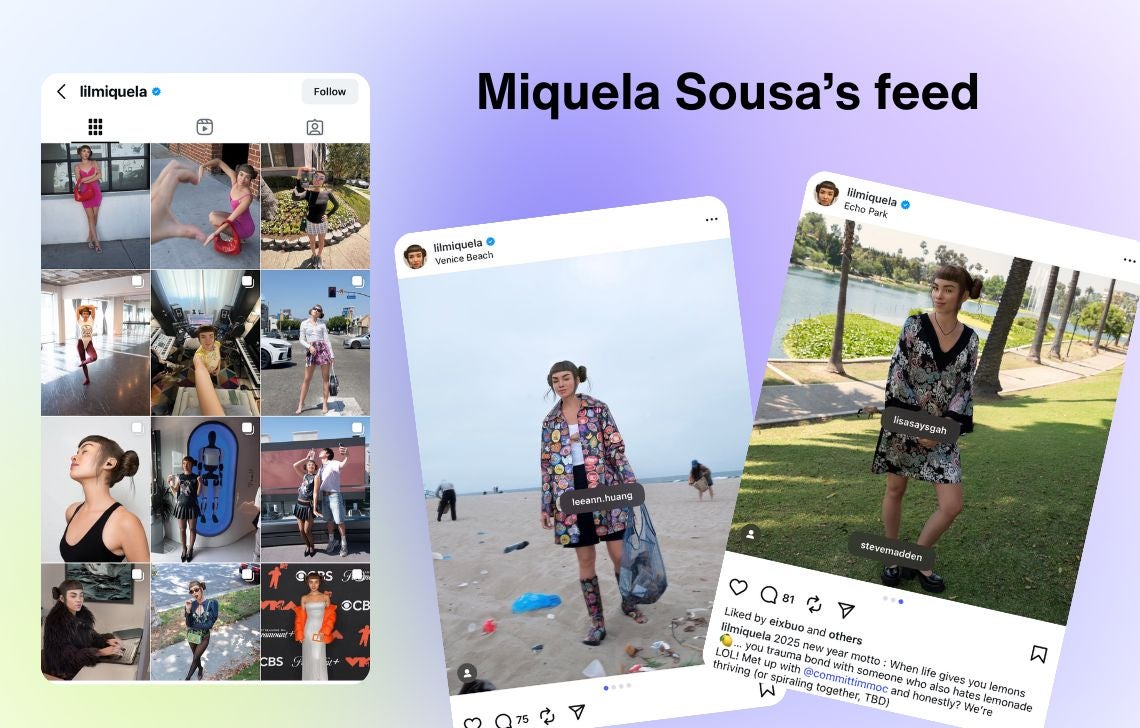
Piloting projects in mainstream retail (2022-2024)
The early 2020s sparked a new direction for tech startups: the creation of virtual models for ecommerce. The Lalaland company was among the first to secure a foothold in the niche, partnering with Levi’s and Tommy Hilfiger among other brands.
Levi’s used AI-generated fashion models to, first and foremost, diversify their imagery. As the company stated, AI models help them represent each product with more than just one model, reflecting more types of consumers.
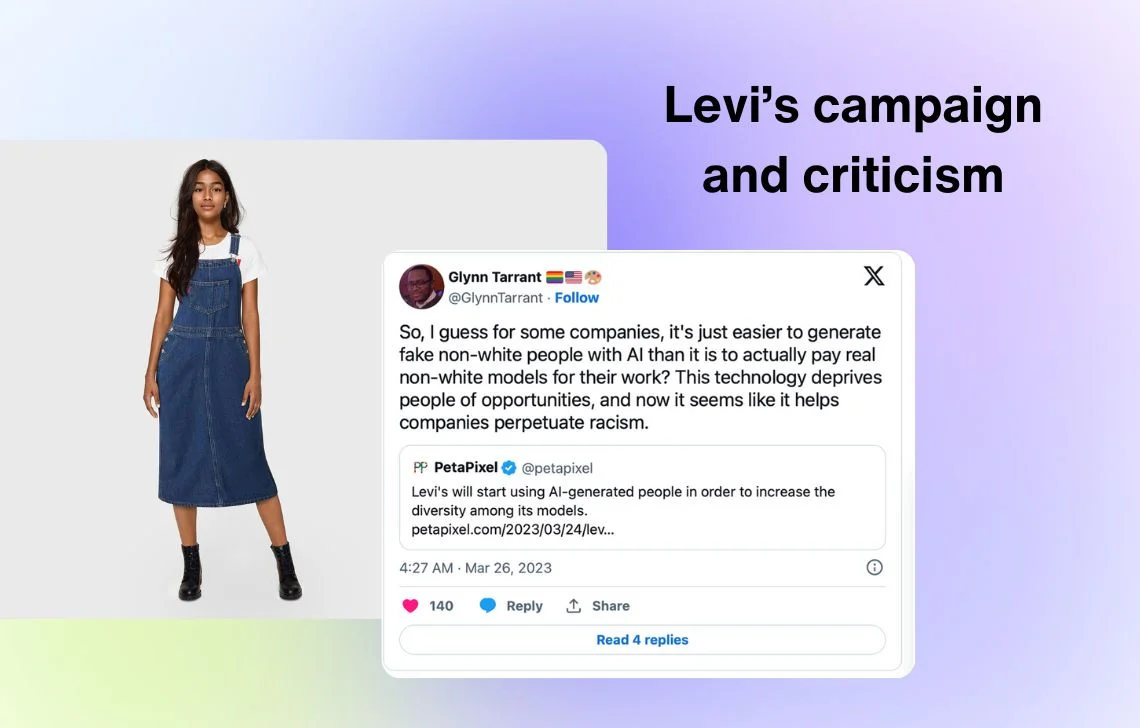
While there was some backlash in the wake of Levi’s AI campaign, it was a stepping stone for a wider adoption of virtual fashion models.
What’s important is that sceptical or critical reception pushes fashion brands to establish new standards in how they approach AI tech. After a communication crisis with the first AI model campaign, Levi’s publicly updated their “AI principles” to reinforce the idea that technology is used for diversity and sustainability, not at the expense of real human rights, employment, and well-being.
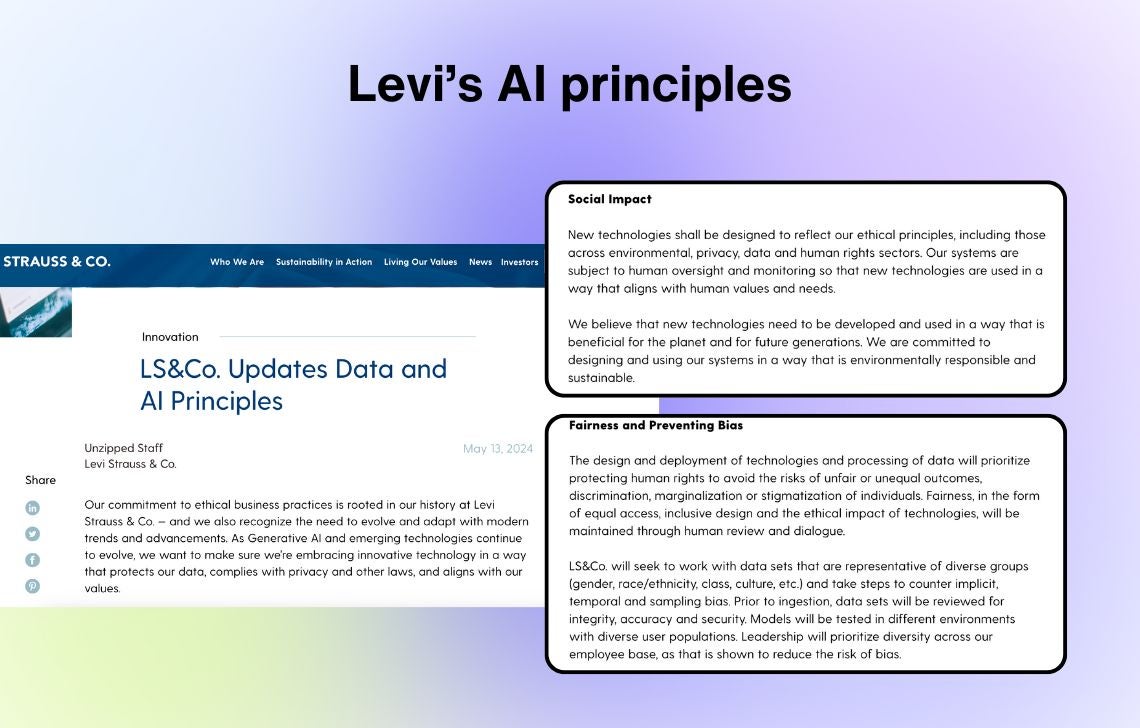
Mango’s teen line also sparked controversy with its AI model ads. The CEO highlighted that AI campaigns can be created more quickly, and the company has been developing its own AI/ML pipelines since 2018.
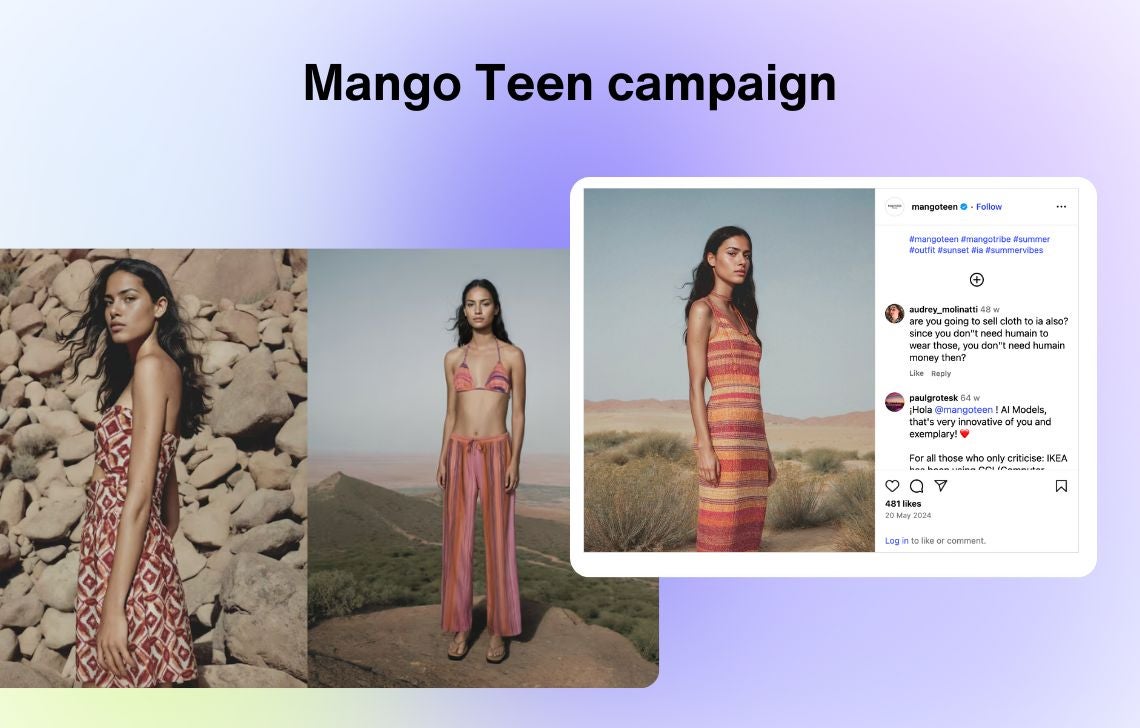
Despite criticism, the brand is happy with the results AI fashion models bring (significant time savings, sustainability, and a high level of realism) and keeps AI tech at the core of their strategic development for the future.
Mango Teen’s feed on Instagram has AI content alternating with real model shoots, and they are indistinguishable at first (or even second and third) glance.

AI models in Vogue and beyond (2024-2025)
In 2024, AI-generated imagery and virtual models started being spotted in Vogue and other publications. Vogue Portugal used an AI image on the cover, while Vogue US published the first major fashion campaign fully generated with AI.
It was a campaign for Guess, designed by an AI agency, Seraphinne Vallora. The agency claims that the combination of speed and flexibility (which are often a bottleneck in traditional shoots) was the primary motivator of this ad.
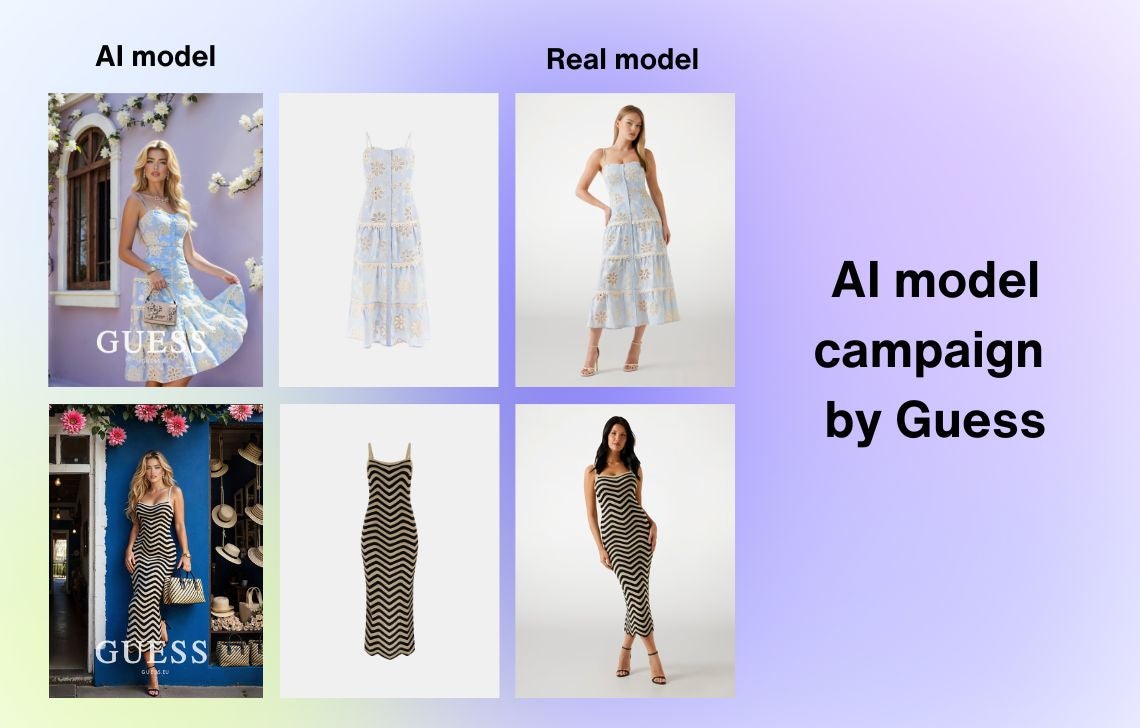
This Guess campaign achieved widespread visibility and showed the production efficiency in using AI models. Even though it’s heavily criticized for pushing unrealistic beauty standards with those digital models, it has stimulated a lot of discussions around the strategic benefits of gen-AI in fashion and the need for more mature regulations in disclosing AI-generated content.
The rise of digital twins (2024-2025)
As opposed to virtual models created from scratch, some brands go for digital twins: it means that real-life models sign an agreement for their likeness to be used in fashion campaigns.
H&M piloted the use of digital twins, creating AI models out of 30 human models, ensuring proper rights management and consent. Models involved expressed their excitement about such technology, stating that this is the way for them to be simultaneously “present” on multiple shoots a day, regardless of the location and without the jetlag.

What’s interesting is that H&M uses explicit disclaimers on the images of digital twins, potentially setting the tone for further AI fashion model implementation.
Digital twin technology is also adopted by ecommerce marketplaces. For example, Zalando admitted that in 2024, 70% of their editorial campaigns were AI-generated, and AI tools cut their production costs by as much as 90%.
Apart from drastic cost and time savings, Zalando’s reps say that digital twins allow them to create content that’s easily aligned with different platforms and trends.
Focus on AI model videos (2025-2026)
Gen-AI is confidently entering the video space, and fashion brands are picking up the trend. In a Valentino and Vans collaboration for the Fall/Winter 2025-26 collection, the companies used the images of real models who worked on a Paris show for a creative video fully made with AI.
In the video with a dreamy aesthetic, the set is being flooded with water, and models are shown striding in Vans shoes through water. Such a creative concept would take much longer and be much more expensive in traditional production.
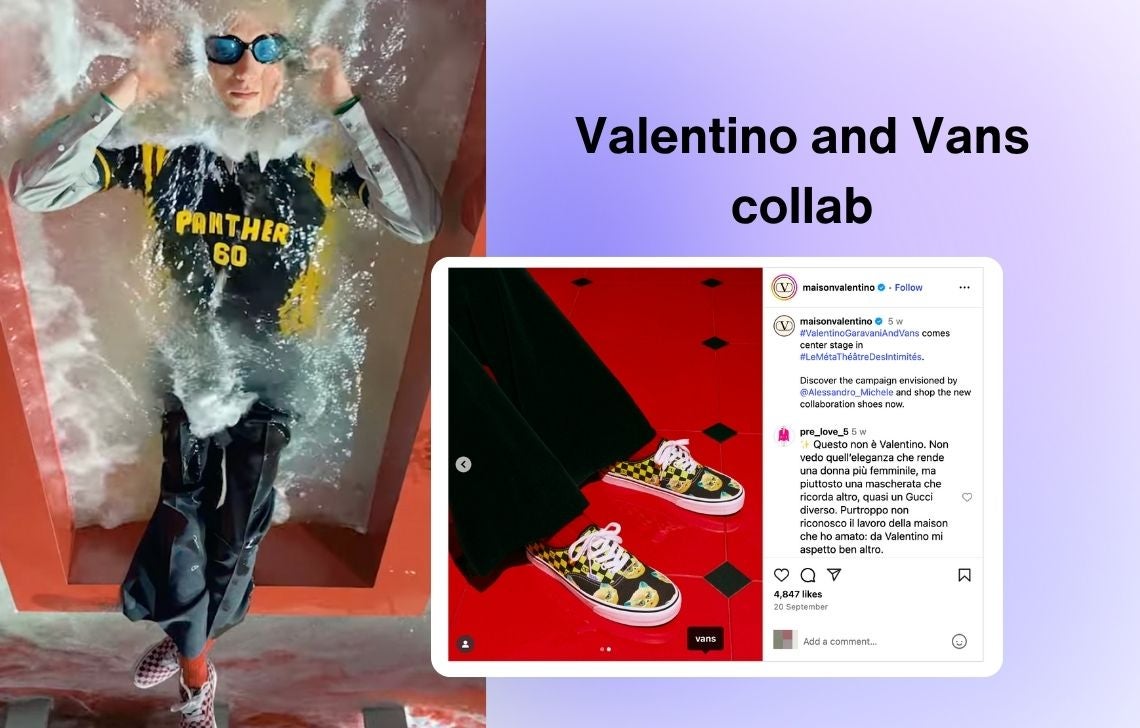
Benefits of AI models and concerns around them
Traditional photography just can’t keep up with the needs of fashion companies and ecommerce businesses, especially when a brand doesn’t have a big budget for experimenting with creative ideas and hiring diverse models for each clothing piece.
That’s where AI fashion models can be the solution:
- It’s a more cost-efficient alternative to traditional shoots. AI imagery can cut production costs by up to 90%, as shown by marketplaces like Zalando. The ability to reuse garments and recreate consistent angles means fewer studio days and lower logistics overhead.
- AI models can help generate PDP images, ad creatives, and social media posts in minutes. You can instantly produce on-brand imagery aligned with each channel’s format.
- No need for reshoots. AI systems can adapt poses, lighting, and backgrounds on demand, so that a single product photo can be transformed into dozens of new images.
- This technology paves the way to a more sustainable fashion photography production. By removing the need for extensive travel, shipping samples worldwide, and other logistics issues, AI models help fashion companies reduce their production footprint.
However, there are some legitimate concerns about AI fashion that should prompt brands and regulators to establish clear, transparent rules.
- Potential false advertising claims due to AI hallucinations or unrealistic representations. AI models may unintentionally misrepresent fabric texture, garment fit, or proportions. Test out AI tools to make sure they use the most advanced technology, follow the best practices, and write smart prompts.
- Promotion of unrealistic beauty standards. Without careful prompt control and diverse datasets, AI imagery can default to narrow aesthetic ideals, undermining inclusivity. Explore AI model libraries to choose the tool that matches your audience.
- Lack of regulation and backlash in reaction to undisclosed AI content. Clear labelling and transparent brand communication are crucial. In some regions, promising regulations are already being enacted, such as the AI Act in the EU, which demands the obligatory labeling of synthetic media starting from 2026. Follow the news to stay compliant and mark AI-generated content whenever required.
At the moment, we’re in a transitional period when the standard in the fashion industry is shifting from on-set collaboration to more fluid forms.
For all brands that are already playing with AI or considering adopting virtual models, it’s crucial to
- Use proper tools that don’t distort real features and can replicate a natural fit on different bodies
- Combine shootings with real models with AI-generated campaigns, understanding what works best for different needs and channels

As the CEO of the mentioned AI agency Lalaland said, brands are not scaling down on traditional photography. They’re just increasing their output in the most cost-efficient way.
They can also replace monotonous, non-creative work with AI models, and try out ideas that would be “too much” in real production.
Ready to try virtual models on your clothes?
AI fashion models are already a core production tool for forward-looking fashion companies. From luxury brands and retail giants to smaller businesses, experiments with AI help shorten the production cycle and show apparel on a more diverse set of models.
The brands we’ve mentioned took different approaches: some built proprietary tools, others partnered with AI agencies, while some used digital twin contracts. Each path works, but all require significant time and technical investment to get right.
Claid’s AI Fashion Models give you the same capability without the development overhead. Whether you’re a marketplace processing thousands of SKUs daily or a brand testing new creative directions, you get production-ready results that preserve garment details and match your visual standards. Same technology that powers enterprise workflows, accessible through a simple interface or API.
Try now to see how fast your catalog and campaign visuals can scale without compromising on quality.

Claid.ai
October 30, 2025